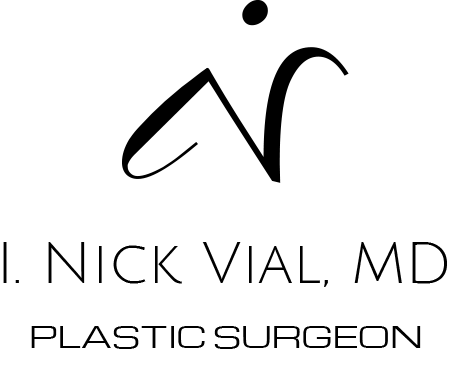What’s It Really Like in the O.R.?
The surgical world is one so widely broadcast in popular media that we all think we have a pretty good idea of what happens inside an operating room. If you’ve watched Grey’s Anatomy a few times, you’re probably remembering intense looks across the table, life or death decisions in every case, and multiple machines beeping ominously. As a savvy viewer, you probably also get the sense that maybe the real deal is a bit less dramatic. However, because only licensed personnel are allowed in the room, it is hard to know what really goes on in there. Let’s pull back the curtain a bit and look at a procedure that is a staple in plastic surgery: the tummy tuck.
What Happens In a Tummy Tuck?
The gist of the operation is that your surgeon marks where you want tissue removed, and then after getting a nice cocktail from your anesthesiologist you fall asleep and wake up to a new body contour and a lot less extra skin and fat. Traditionally, the way that this happens is by drawing out an ellipse (football) shape on your lower abdomen where most of us store excess tissue, removing that tissue, and then closing everything up in a straight line across the lower abdomen that then becomes your souvenir scar. The umbilicus (belly button) gets preserved during the tissue removal stage and then is given a new place to come out. This leaves you with a new scar around the belly button as well, so that your final scar pattern is a small circle around the umbilicus and a long straight line from hip to hip.
What Has Changed about this Procedure Over Time?
Though the mechanics of the procedure are largely the same, the earliest of these types of procedures were much riskier. Like many plastic surgery techniques, the abdominoplasty originated on the battlefield, and was performed in order to remove an area with compromised tissue. As you might imagine, things have gotten much cleaner, tissue removal and planning has become more elegant, and incisional healing has improved by leaps and bounds.
Today, we know that the right suturing techniques and proper postoperative guidelines can make it possible to remove a significant amount of tissue for a beautifully dramatic result. While no surgery is no-risk, the abdominoplasty is one that is done so often that the process is nicely standardized: on-the-fly changes in the surgical plan are extremely rare.
Variations of the Tummy Tuck
There are several variations on the tummy tuck that have dramatically improved the scope of the procedure and what it is able to accomplish, namely:
- mini abdominoplasty
- abdominoplasty with liposuction
- fleur de lis abdominoplasty.
These three variations have changed the game as far as what type of outcomes are possible. The mini abdominoplasty involves a smaller ellipse, a smaller length of scar, and no incision around the belly button (it simply gets pulled down a bit). The abdominoplasty with liposuction addresses stubborn fat (usually in the flanks/love handles) that a tummy tuck alone doesn’t tackle. The fleur-de-lis abdominoplasty (so named for the design of the incision) is a procedure for those with excess tissue in both the upper and lower abdomen. This excess tissue is removed in both a vertical and horizontal axis, creating an entirely new contour to the torso.
Typically, the pros and cons of each of these are discussed in an initial consultation with your surgeon, and recommendations are made based on your individual body composition.
With these variations, some of the old standbys of abdominoplasty have gone by the wayside depending on which procedure is right for you.
Does every abdominoplasty require an incision around the belly button? Not anymore! If you’re a candidate for a mini abdominoplasty, your incision will simply be a horizontal line along the lowest portion of the abdomen, shorter in length than a full abdominoplasty.
Does every abdominoplasty leave you “little in the middle but wide on the side?” Also no! As you probably guessed, this is where a bit of liposuction can often smooth and refine that contour to your liking to get results that direct tissue removal can’t quite achieve alone.
And lastly, if you’re a good candidate for a fleur-de-lis abdominoplasty, your whole anterior torso changes during surgery, not just the lower abdomen.
Postoperative Care for a Tummy Tuck
Postoperative care for a tummy tuck involves a lot of the same things that postoperative care for any surgery involves: rest, rest, and more rest. Depending on how much tissue you’d like to have removed during your abdominoplasty, you may have to remain flexed at the waist for a time to allow your incision to heal before you stand up straight: no backbends allowed. And even with all the advancements in surgical care in the world, nothing can quite replace a drain for removing excess fluid from the surgical site. These restrictions and accessories are typically a few weeks in duration, and you and your surgeon will make a plan for what your postoperative course should look like to optimize your outcome.
Schedule Your Consultation with Dr. Nick Vial
Curious to know more about surgical options that might be right for you? We are happy to help. Reach out to our office to schedule your consultation and we will guide you through the process every step of the way.


